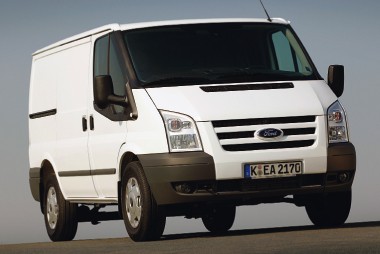Review
Ford is aiming to help save the planet and cut fleet costs too with the launch of a new Transit Econetic model that combines lower CO2 emissions and higher fuel economy.
The Transit Econetic comes in one model size only at present and will be available from the summer. But Steve Kimber, Ford’s commercial vehicle director, hopes there will be more models to come.
At the Econetic’s launch, he told Fleet News: “This is the beginning of a challenge as there are no high roof versions yet. But it’s a big step forward and I would like to see a full Econetic van range eventually.”
The Econetic is based on the front-wheel drive Transit 280S panel van with a short wheelbase and 2.2-litre 115bhp Duratorq TDCi engine. Claimed combined fuel economy is 39.2mpg, an increase of 13% over the standard model, while CO2 emissions are 189g/km.
The Transit Econetic is the first Ford commercial vehicle to offer Euro 5 emission standards in the sector.
To create the Econetic, the engine has been specially re-calibrated and a new standard speed limiter has been introduced. With this device in place, the top speed is 70mph.
To prevent potential manipulation of the limiter unit, it has been hard-coded.
Longer gearing has been achieved through fitting a 4.36 final drive ratio.
Larger 16-inch steel wheels with 215/75 R16 lower rolling resistance tyres are fitted, while a full-size wheel cover is fitted to help reduce aerodynamic drag. The larger wheel diameter also leads to a reduction in engine rev levels.
Kimber said no prices had yet been revealed but hinted that there would be a ‘modest’ increase over the standard model. He declined to speculate on sales figures for the new model.
This summer also sees the launch of a Fiesta Van Econetic, powered by a specially-calibrated version of the 90bhp 1.6-litre Duratorq TDCi engine.
This offers fuel economy of 76.4mpg on the combined cycle and CO2 emissions of 98g/km.
Eco-friendly cars and vans are becoming more popular, but often come with a penalty in the ride and drive department.
Acceleration is often stilted and sluggish and you are left with the feeling that while these models are very worthy, they are not something you’d want to drive day after day.
However, after our test in a left-hand drive model in Germany, we were pleasantly surprised by the Transit Econetic.
Towing weights are slightly lower and the front-end price is
slightly higher than its non-Econetic equivalent, but if those two points don’t affect your buying equation, then you are left with a very praiseworthy performer indeed.
Our test drive featured 150 miles or so of varied terrain and, with a 600kg load of sand in the back, I honestly couldn’t tell the difference in performance from the ordinary Transit models – until I hit 70mph, of course, when the speed limiter cut in.
But even this safety device is introduced in such a smooth way that it doesn’t really intrude.
Drivers presented with a speed-limited van will soon get used to the fact that they can’t thrash it illegally and will settle down to a much more relaxed style of driving.
Verdict
Higher fuel economy and lower CO2 emissions without any noticeable effect on general ride and handling – the Transit Econetic is a fleet no-brainer, providing of course that you don’t need a Transit with a heavier gross vehicle weight than 2.8 tonnes. We look forward to seeing more Econetic models in the future.
















